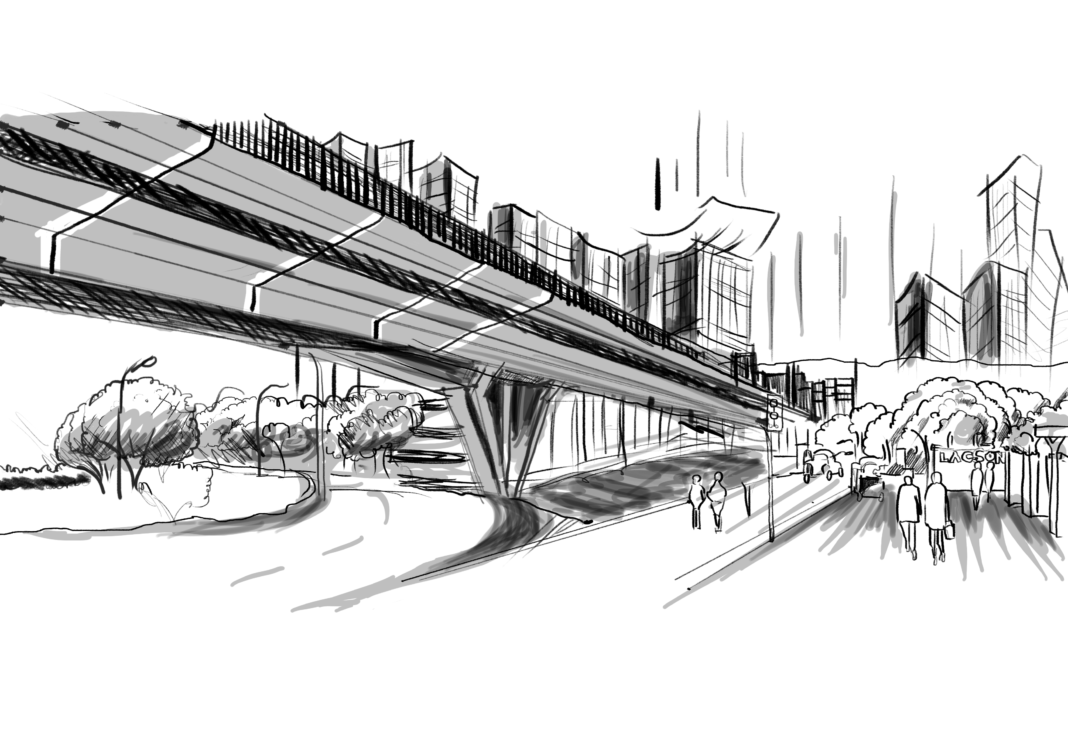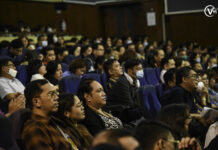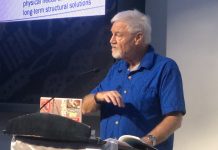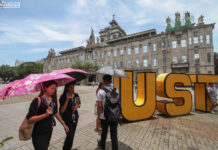AS THE Department of Public Works and Highways (DPWH) pushes through with the Lacson flyover construction in 2017 after four years of delay, it has yet to offer concrete assurance that it would ease traffic woes and not cause noise pollution in Manila’s congested Sampaloc district as well as the University Belt.
Rodelio Tiburcio, chairman of the Department of Civil Engineering, said the four-lane flyover would not be wide enough to accommodate container trucks amid the continuous increase in car ownership.
“[The Lacson flyover] would not be enough to eradicate traffic congestion because the main problem would be the increase in volume of cars and we are restricted by what is available to us. Otherwise road widening would be needed,” Tiburcio said in an interview with the Varsitarian.
College of Architecture professor Felicisimo Tejuco pointed out that there had yet to be a proposal to decrease the number of vehicles on the streets.
Design changes
The Lacson flyover project was supposed to start in September 2016, but was delayed due to changes in the design and various government approvals that needed to be secured.
For instance, the flyover was lowered to second-level height from the initial third-level height after the proposal to build the Metro Rail Transit Line 9 was cancelled.
The budget increased to P2.425 billion from P1.6 billion because of changes in the design.
DPWH project manager Alex Bote said the construction of the flyover would begin three to four months after the submission of the detailed engineering design (DED) in February 2017. The DED incorporates the “final design, specifications, and estimates” of the structure.
Approvals of the Regional Development Council, barangay chairmen and the National Economic and Development Authority are also needed to proceed with the implementation of the project.
A document obtained by the Varsitarian showed that the flyover design called for “reduction of volume of traffic, noise, intersection delay” and “improvement in road condition, air quality and job generation within the vicinity.”
The flyover will start from Alcantara Street and end at Aragon Street. There will be a one-lane down ramp on Dimasalang Street.
Noise pollution
Engineer Lawrence Pangan of the Facilities Management Office warned that the construction of the flyover would worsen noise pollution, affecting classes in the Albertus Magnus and Roque Ruaño buildings.
“Sound pollution has been affecting the Engineering and Education buildings. There are still complaints on cars passing by Lacson,” Pangan said.
Sound barriers were proposed to reduce the noise that might be caused by the flyover. Bote said the proposal was included in the DED after the DPWH sent engineers to Japan to “adopt up-to-date noise barriers” for the flyover.
Rector Fr. Herminio Dagohoy O.P., in a previous interview, said noise barriers would be necessary for noise mitigation.
“If you’re going to construct that then it will affect our Engineering building, our Education building and the hospital. And since it is a flyover then you have to come up [with] a mitigating [structure] to reduce the noise,” Dagohoy said.
But Architecture Dean Rodolfo Ventura said sound barriers would not be sufficient in removing noise pollution. Noise barriers with a “landscape treatment” such as those on Epifanio de los Santos Avenue would be an improvement in the project design.
“I oppose the [Lacson flyover] and it would definitely be not positive for UST. But given the scenario that we cannot win, the only direction we have right now is acceptance, and find a solution,” Ventura said.





















